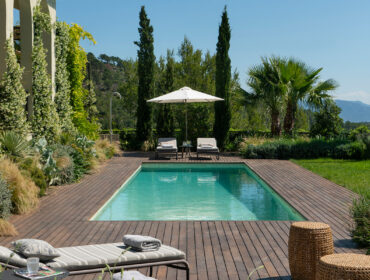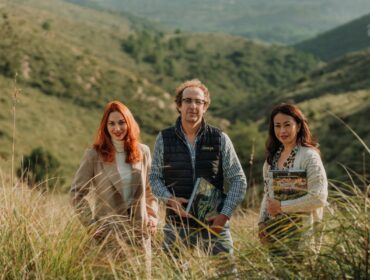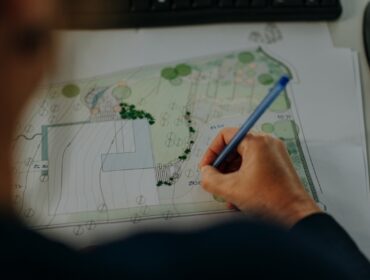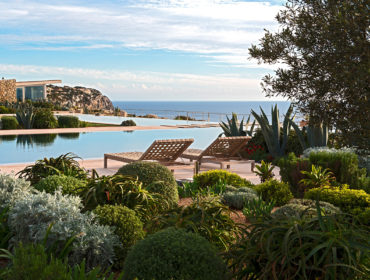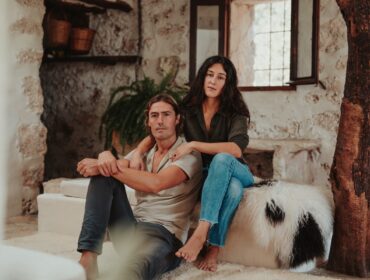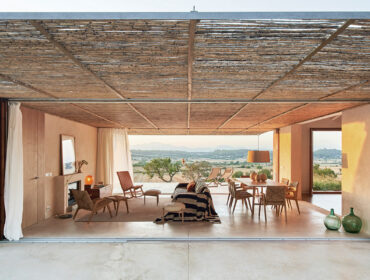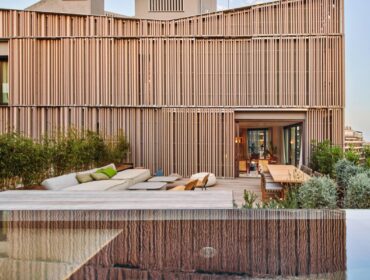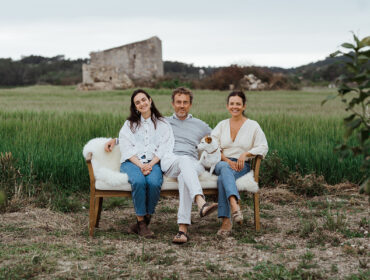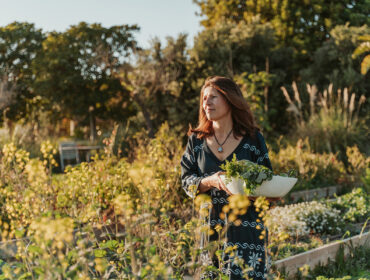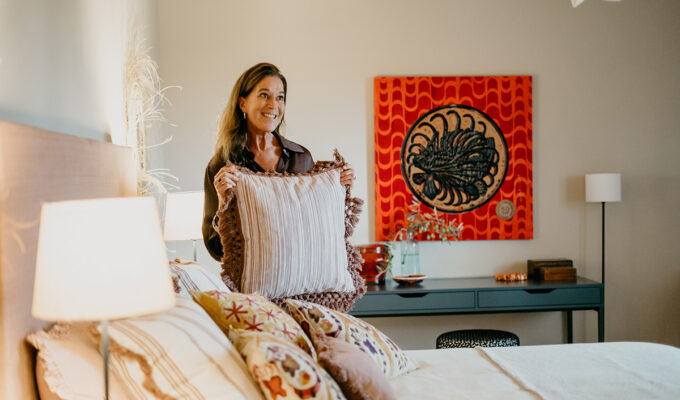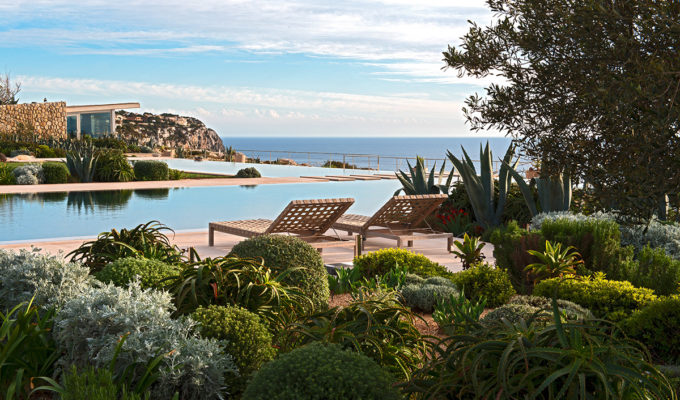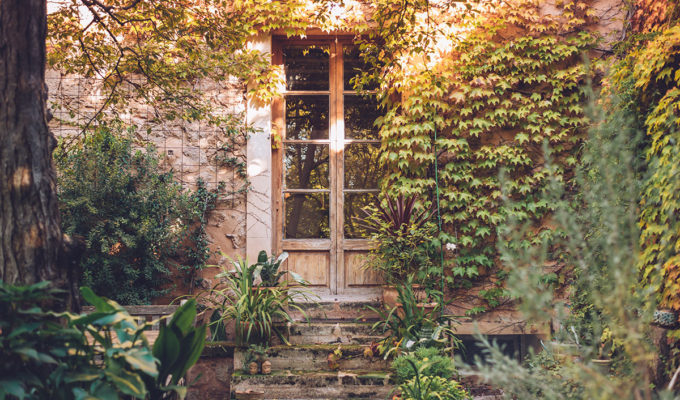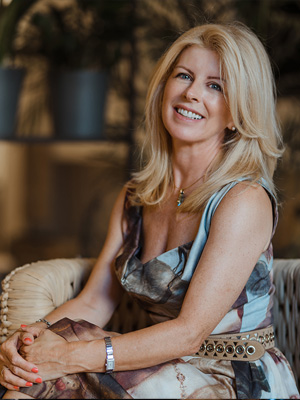Whether you’re envisioning a tranquil Mediterranean garden, a contemporary urban courtyard, or a sprawling estate landscape, Mallorca‘s diverse array of landscape and garden architects bring together creativity, expertise, and a deep understanding of local terrain to craft stunning outdoor spaces. Specialised in harmonising natural beauty with functional design, these experts are dedicated to transforming ordinary spaces into extraordinary retreats, tailored to your preferences and lifestyle. Aptly incorporating patios, pool areas, courtyards, and rooftop terraces into designs that transform spaces into oases.
From precise geometric formality to wildflower fields, their styles are as wonderfully varied as the diverse terrain of the island. Join us as we explore the island’s best landscapers and garden designers, feature out-of-this-world gardens in both rural and urban landscapes, and share some of our favourite experiences – fresh from the garden.
The Meaning of Mediterranean Living
The Spanish dream home goes well beyond its inner four walls. Gardens, patios, terraces and balconies give an extra dimension to your new life in the sun.
Landscape and Garden Architects
S’Estepa
Gardening company S’Estepa is based in Inca, but has been designing gardens all across the island for over 18 years. Founder and head gardener Pedro Campaner – an Agricultural Technician and Landscaper – is passionate about protecting and nourishing the Mallorcan landscape, incorporating indigenous plans into his designs. Their designs focus on the relationship between people and the land, using endemic and exotic species to create elegant gardens that respect nature’s rhythm.
S’Estepa, Designing Gardens with Soul
S’Estepa, Designing Gardens with Soul: A passion for gardening, nature, landscape design and protecting the Mallorcan terrain.
My Landscaping Group
Many consider the garden as important as the house, especially on Mallorca with its mild and sunny year-round climate. Johannes Dütsch, founder of My Landscaping Group, excels at creating private paradises that can be enjoyed throughout the changing seasons. With 15 years of experience, he knows what is possible, advisable, and should be avoided. His portfolio includes finca gardens, citrus groves, vegetable gardens, petanque courts, fire pits, golf courses, and walkways.
Architects of the Garden
A garden design and landscaping company in Mallorca founded by Johannes Dütsch an experienced landscape architect.
Stephen Woodhams
Stephen Woodhams is an expert gardener who specializes in creating tailored outdoor spaces that are both comfortable and beautiful. He uses detailed planning and diverse plant selection to create unique, bespoke designs that create a sense of connection with the client. Each space is unique, and Stephen’s passion for plants and the joy he brings to his clients makes working with him a pleasure.
Beautiful Outdoor Spaces by Stephen Woodhams
Expert gardener Stephen Woodhams explains the key to turning any outdoor space into an oasis of calm where his clients can relax.
Mashamba Garden Design
When Englishman Alexander Warren-Gash and American Jennifer Warren-Gash met in Costa Rica 12 years ago, they never imagined they would become a cutting-edge landscape design duo in Mallorca. Ten years ago the young couple moved to the island to “upgrade flip flops for sandals…we were ready for a little more culture,” Jennifer laughs. Alexander had an interest in garden design and began working in gardens when they arrived on Mallorca to learn about plants and the Mediterranean climate.
Today the couple work as a team, creating modern conceptual “aromatic meadows” that flow in “rhythms” of wild grasses, rows of pale pink Gaura, scented violet Lavender Dentata, bushes of silver green Teucrium, and blue spires of Echium.
Hearty banks of Seville roses are a favourite for long-lasting blooms and vibrant hues. The focus for Mashamba Garden Design is on the blooming from season to season, balancing the plants’ shape and colour changes throughout the year. Jennifer is the brains behind the terraces, designing special vessels for pool areas and furnishing outdoor living spaces. “We want to create secret places, places to retreat to and read or nap,” she explains.
In designing dry gardens, Mashamba’s emphasis is on low water consumption and sustainability. “We prefer not to make sprawling green lawns,” Alex says, “they are expensive to maintain here and suffer disease.” Instead, they opt for local porous marès stone gravel paths and sub-tropical species of plants; Agave, Yucca, Aeonium and Aloe are planted with bulbous Teucrium and Buxus bushes to create structured, geometric dry gardens.
Contemporanium
Behind the beautiful raised flowerbeds, lush leafy walls and creative landscapes of Contemporanium is English designer Mark Whiting. He moved from London to Mallorca after studying at the Inchbald School of Design. While a botanist at heart, Whiting has a strong architectural style and focuses on creating gardens that are low maintenance and low water consumption. He is an expert in the hard details of gardening such as grounding paths, drainage systems, and wall construction. In designing a garden, Whiting believes the planning of the architectural landscape is as important, if not more so, than the plants. And lighting is integral; he uses low LED lighting to illuminate pathways through the garden for night wandering.
His collaboration with clients begins by giving them a questionnaire to get a feel for how they will use the garden, technical aspects of the property, and which artists and architects they admire. “It tells me a lot about what kind of garden they will want.”
For a British client, a gentleman farmer who loved the painter Mondrian, Whiting used the artist’s minimalist ‘jazz’ paintings as inspiration for a newly built 20,000-square-metre estate. The Modern Farm has rows of grape vines crossed by bands of olive trees, and a grid of citrus trees surrounded by fields of wheat. The garden surrounding the house is linear and precise, planted to echo the dimensions of the building with long raised rectangular beds. Clipped fragrant rosemary hedges frame lemon trees, while a verdant wall of Parthenocissus resonates the vast wheat fields that go from vibrant green to gold as the seasons change.
Caroline Menzel
Garden designer Caroline Menzel calls herself a “dream broker” with an intuitive and emotional gardening style, leaning more toward green textures and form over florid colourful blooms. She has designed gardens for some of Mallorca’s most privileged properties. The first thing I ask my client is: “What is your earliest garden-scape memory? Was it a park, a field or a formal garden? This tends to inform how one feels about plants.”
The 77-year-old German designer started her training when she was living in London. She also studied at the Inchbald School of Design, coincidentally 30 years before Whiting. She began designing gardens and writing about them before the two-year course finished. Appointed the garden columnist for German newspaper, Welt am Sonntag, she went on to write a weekly review for 15 years.
Her knowledge and years of expertise are why she has become the go-to consultant for some of Europe’s most important estates. Her understanding of plant species (which she refers to casually in Latin) comes from “making a lot of mistakes, planting things and experimenting with what would grow.”
Her own garden is her most personal work, a “laboratory” surrounded by oak tree groves. An unusually dense and leafy landscape for Mallorca, the mossy terraces are flanked by hedges of Buxus and Tucrium, and Cypresses are trimmed and shaped precisely to create geometric symmetries. Mulberry, Eleagnus, and Ebbingei create layers of green leading the eye through the surrounding oaks to the fields in the distance. The subtle framing and creation of vistas is not a happy accident, however. Much as a painter employs paint to draw your gaze, Menzel achieves the same effect in her gardens.
Photos: Sara Savage, Alexander Warren-Gash & Mark Whiting
Featured Gardens
Finca Alfabia
Tatiana Baibabaeva and Tyson Strang discovered their passion for old stone houses during home exchanges while exploring the Mediterranean. After purchasing a finca in the island’s rural centre, they reformed the property with a heavy emphasis on using local, natural materials, things taken directly from the land. Their “poc a poc” process to reforming Finca Alfabia has brought out the home´s inherent beauty and connection to its natural surroundings.
Reviving an 18th-century stone finca
American couple Tatiana Baibabaeva and Tyson Strang undertook a herculean task in reforming a rural Mallorcan finca. The result? Their dream rustic Mediterranean home.
Casa Palerm
Oscar-worthy design by OHLAB
Casa Palerm by OHLAB could be some sort of luxury safari lodge. With a discreet, natural style blending into its surroundings.
Urban Gardens
Paseo Mallorca 15
Reshaping urban residential design in Palma
The new generation of architectural design in Mallorca is represented by the architects OHLAB with the project Paseo Mallorca 15.
Fresh from the Garden
The Meaning of Mediterranean Living
The Spanish dream home goes well beyond its inner four walls. Gardens, patios, terraces and balconies give an extra dimension to your new life in the sun.
Edible Flowers by Heidi´s Herbs
A garden of earthly delights
Heidi Gobel is the green fingers behind Heidi’s Herbs, an edible flower and herb business that some of Mallorca’s most innovative chefs are consulting with.
Natural Chef and Flower Essence Therapist Rosario Calvo
A day in the garden with Natural Chef Rosario Calvo
Find out from naturopath Rosario Calvo what it takes to start an organic garden from scratch with her family in Sant Joan, Mallorca.
Simply Son Braho: Farm to Table Produce
Farm to table produce at Simply Son Braho
“How do we as a family become as self-sustaining as possible?” This was the question asked by Alaró resident, Brenda Irani from Son Braho.

